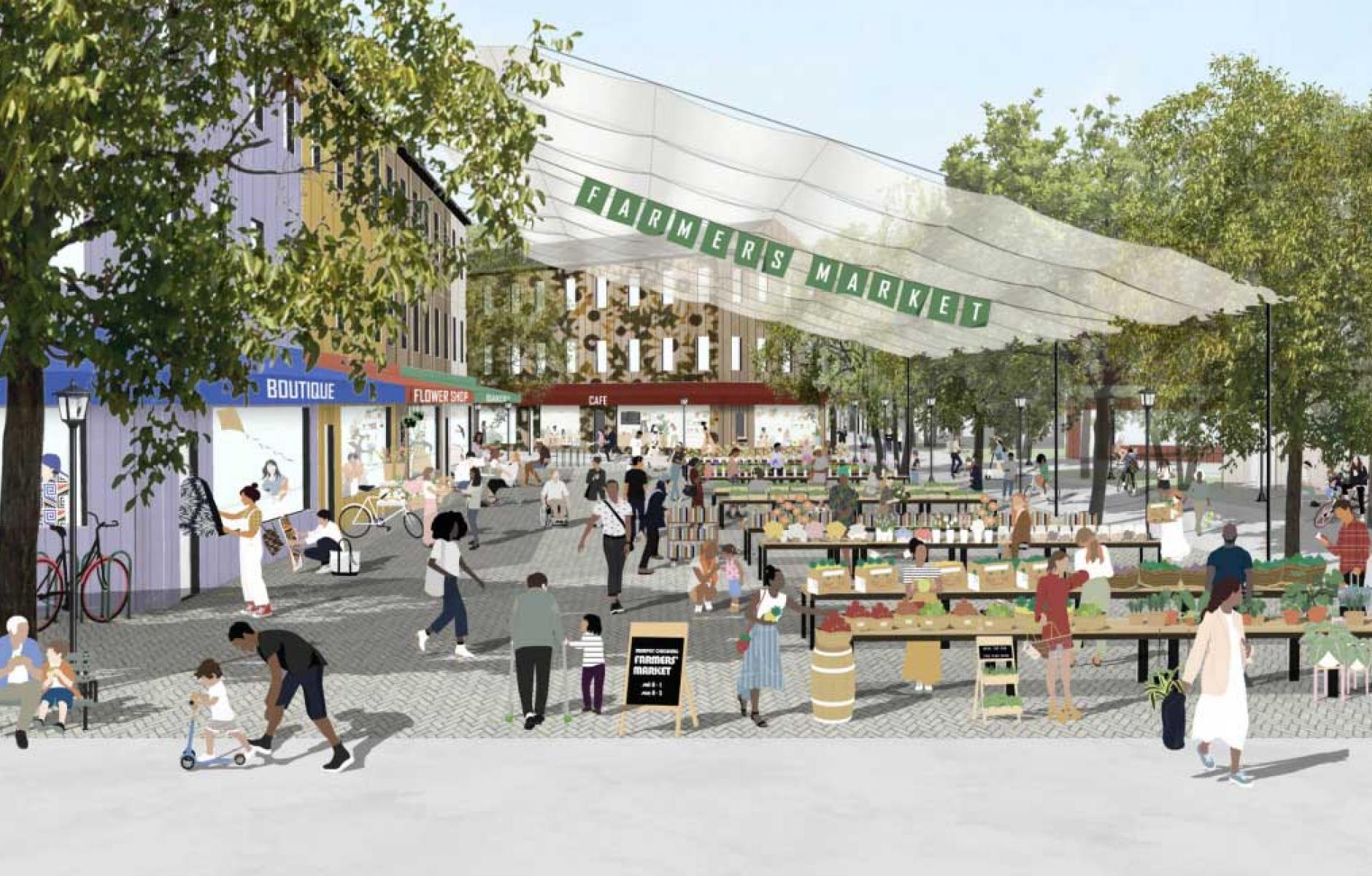
Developer minimizes car use in community plan
Note: This article was revised to include more plan details (11/4/22).
The national developer, Culdesac, is bringing its car-light community designs to Atlanta, Georgia. The 20-acre site on the Atlanta Beltline includes a mostly residential area that is car-free, while also incorporating parking for substantial office, industrial, and retail space. The project is branded Murphy Crossing by Culdesac.
Culdesac gained national attention in recent years with its “car-free” development in Tempe, Arizona, called Culdesac Tempe, which is nearing completion. The Arizona project is designed around car-free residential streets and courtyards, but also includes parking for a small commercial area. Culdesac's approach represents a radical departure from the norm for a national developer.
The Atlanta project is similar to Tempe’s, but bigger and more varied. As Urbanize Atlanta reports, “car traffic is relegated to the fringes” of the preliminary site plan, which is now subject to public input and future revisions. About half of the site is car-free, with very tight urbanism organized around townhouses and apartment buildings with pedestrian ways, courtyards, and some mixed-use, even in the car-free area (see plan overview, and circulation plan, for details, below). A couple of streets go through the site, skirting the car-free area, to service the larger workplace, retail, and light industrial uses.


The industrial site is currently covered with large warehouse-type buildings, some of which would be revived, but most would be replaced, according to the plan. There’s a greater variety of public spaces. And there’s much more commercial and employment, and a parking deck.
Culdesac “is pursuing projects in multiple other cities, but we were able to help them expedite progress in Atlanta faster than in a few of the other locations they are working on,” notes Eric Kronberg, an architect who is working on Murphy Crossing. Kronberg Architects + Urbanists, an Atlanta-based new urban firm, is providing urban design, entitlements, and initial architectural concepts.

The project will contribute to Atlanta Beltline's affordable housing goal. Twenty-five percent of the residential units will be designated permanently affordable with an additional 5 percent deemed affordable for at least the next 30 years. The target is between 60 and 80 percent of the area median income. Additionally, Culdesac intends to offer 30 percent of all retail and light industrial spaces at an affordable rate to small businesses in the area.
Murphy Crossing is designed around a superblock, of sorts, but it is not your grandfather’s superblock. Unlike modernist or suburban superblocks, the block features compact and intimate urbanism. If it breaks that “rule,” it does so in a way that is consistent with new urban principles. The wide range of public spaces—including many types of parks, plazas, gardens, dog park, central pedestrian spine—is telling, as is the mix of uses and cultural facilities.
The plan takes an unusual approach on an important site in southwest Atlanta:
“The plan has prioritized high density, transit-oriented development focused on preserving land for pedestrians and bicyclists in outdoor spaces protected from cars,” the Beltline announced recently. “The open layout will also include residential and commercial affordability in a mix of new and existing buildings to create connectivity with the surrounding neighborhood. Additional components will include a grocery store, retail and dining options, co-working spaces, arts and culture programming and a farmers’ market—in tribute to the land’s historic fabric and character.”
“The revitalization of Murphy Crossing has long been a part of the vision of Atlanta BeltLine and represents many of the aspirations we have for sustainable, equitable redevelopment along our 22-mile corridor,” said Clyde Higgs, president and CEO of Atlanta BeltLine, Inc. “We believe the Culdesac team, which includes members of one of the very neighborhoods this project will impact, will be great stewards of the community’s desires and great partners.”
Culdesac Atlanta is part of $800 million in private investment within a mile of the site. The site is adjacent to the BeltLine’s Westside Trail and near the Oakland City and West End MARTA stations (0.6 mile away), providing transportation and neighborhood connectivity.
Culdesac Tempe is one of the most closely watched developments in the US, due to its “car-free” branding, and the Atlanta project adds to that interest. That residential components are car-free, but the commercial uses still require automobile access to survive. It will be interesting to see how these designs play out in Atlanta, Tempe, and elsewhere.







